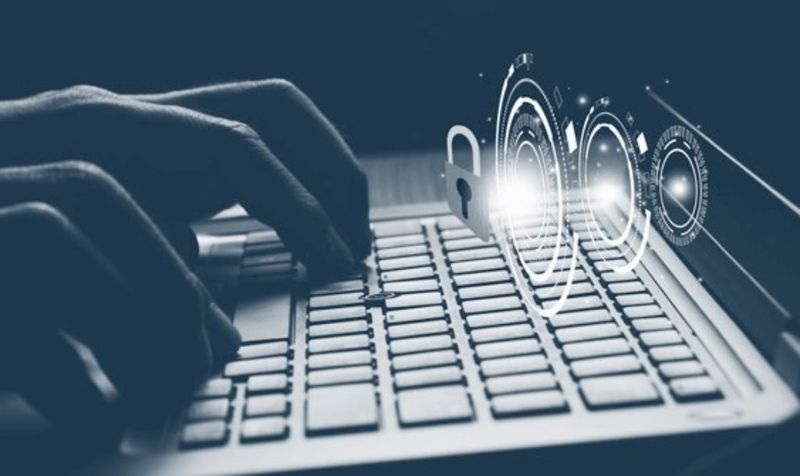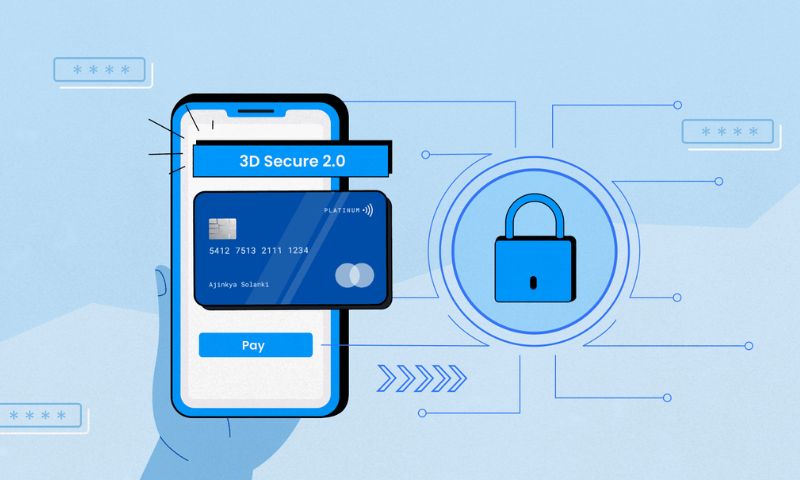Two-factor authentication for digital payments sounds complex, right? But here’s the truth: it’s the gateway to safer spending online. Think of it as a steadfast guard dog for your virtual wallet. When you buy your next gadget or order that late-night pizza, 2FA steps in like a security checkpoint. One password? That’s old school. Today, we dive deep into how adding a simple step can keep your hard-earned cash secure and boost your confidence in a world brimming with digital dollars and cents. Want peace of mind when you click “pay”? Let’s unlock the secrets of robust online payment protection together.
Understanding Two-Factor Authentication and Digital Payment Security
The Role of 2FA in Enhancing Online Transaction Security
Two-factor authentication (2FA) is like a double lock for digital payment safety. When you use 2FA in online transactions, that’s another layer to keep your money safe. It works simple. First, you enter your password. Next, you prove it’s really you with something extra, like a code from your phone or a fingerprint. Banks love adding 2FA to their mix. Why? It cuts down on fraud big-time. When you hear OTP for transactions, that’s a one-time code sent via SMS or app to guard your purchase. It’s fresh each time, so hackers can’t just snag it and use it later.
Here’s how it plays out. Let’s say you buy those cool sneakers online with your debit card. You input card details. That’s step one. Suddenly, you get a text with a code, or your banking app pings you. That’s step two – your 2FA in play. You punch that code in, and voila, the deal’s locked down. By using 2FA, you’re keeping your digital wallet far away from trouble.
The Impact of Multi-Factor Payment Security on Consumer Trust
Now let’s chat about multi-factor payment security, a big step up from plain old passwords. Imagine a fortress around your funds, with multiple checkpoints. That’s what this is like. When shopping online, you’re often putting trust in a site you can’t see in real life. But with layers like a code from your phone, or maybe even your voice or face chiming in, you feel way safer smashing that “pay” button.
Biometric authentication takes it up a notch. Instead of typing codes, your unique bits like your fingerprint or mugshot prove it’s you. Imagine paying for lunch with just your smile – that’s facial recognition payment in action. All this tech magic means fewer bad guys sneaking through. People dig this because it feels more personal. “My phone knows it’s me, and it’s keeping my cash safe.” That’s what folks are thinking.
And there’s a ripple effect. When you’re confident your money’s snug as a bug, you shop more. You’re all in on trying new apps and ditching cash for taps. It builds trust. And that trust is the golden key for banks and shops to keep you coming back. Without trust, it’s like building a house on sand – won’t stand.
Think about it – with just a password, you’re hoping for the best. Adding voice, face, or a fresh code every time? Now you’re armored up for battle. No system’s bulletproof, nope. But every layer you throw on is like telling hackers, “Not today, buddy.” And the cool part? Businesses get it. They know safe customers are happy customers. So they’re racing to make security easy but tough as nails.
Staying safe online starts with knowing how it all works. That’s why wrapping your head around 2FA and multi-factor security matters so much. You’re not just clicking and hoping. You’re taking charge of where your money goes and who’s allowed anywhere near it.

Biometric and SMS Authentication Techniques in Banking
How Biometric Authentication Safeguards App-Based Payments
Let’s talk about face and fingerprint checks you use to unlock your phone. They’re key to keeping your money safe when you pay with your phone. Banks use these checks too. They make sure it’s really you trying to spend your money, not someone else. This is called “biometric authentication,” and it’s a fancy way of saying the bank checks your body’s unique features to prove your identity.
When you use this on your banking app, you’re using one of the best locks out there. With a quick scan of your face or tap of your finger, your app knows it’s you. That means no one else can get into your account. Your face or fingerprint is your secret key. And the best part? It’s super fast and super easy.
Biometrics don’t stop with your face or finger. Your voice can be a key, too. When you call your bank, they might know it’s you just by hearing you talk. That’s pretty cool, right? This makes paying with your phone not just easy but super tight on security. It’s like having a guard that knows you and only lets you in.
SMS Authentication and OTP: Balancing Convenience with Security
Now, what about when you get a code in a text to prove it’s you? That’s SMS authentication. It’s part of what the smart folks call “2FA in online transactions.” The “2FA” bit means two steps to prove your identity. It’s like having two locks on your door. The first lock is your password, and the SMS code is like that second, extra-tough lock.
When you buy something online, you might get a text with a short code. That’s an “OTP,” a one-time password. You punch that into the website to show it’s really you using your card. This code only lasts a little while, so if someone else finds it, it’s probably too late for them to use it. It’s a fast game of beat the clock for top-notch safety.
But hey, texts can come slow or not at all if your signal’s down. So, it’s not perfect. Yet, it’s a strong buddy for your password, making your online checkout much safer. It’s a guard duo that’s tough to beat.
Companies use these SMS codes for all sorts of stuff. They help keep your money safe when you move it around or pay bills. You don’t want someone else playing with your hard-earned cash, right? SMS authentication helps stop that from happening.
So there you have it. Biometrics like your face or finger and SMS codes make sure it’s really you spending your money. Next time you use them, know that they’re super heroes for your wallet. Keeping things safe, quick, and right at your fingertips or in your texts. And in this world where buying stuff happens in a click or tap, you want those heroes on your side.

The Integration of Advanced Technologies for Secure Payments
The Evolution and Application of Authenticator Apps and Hardware Tokens
Tech makes digital payments safe. We use fresh tools for this big job. Think of authenticator apps like a trusty friend. They give you an OTP (one-time passcode). This passcode is a special key. You use it with your password. It’s what we call 2FA, or two-factor authentication. With this, you prove it’s really you. No OTP, no access. Simple and safe.
Many banks and online shops now use these apps. They help us follow bank security rules. With apps, you do not wait for an SMS. This is good! SMS can have delays. Or, bad people can steal them. We don’t want this. So, apps are better for fast, safe checkouts.
Now, let’s talk about another protector. Hardware tokens. They seem small but are mighty. You keep them with you. Like a keychain. They make OTPs too. No phone? No problem. Hardware tokens work alone. So, if your mobile is lost, you can still get in safe.
Implementing Risk-Based Authentication and QR Code Verification
Risk is a part of life. And online payments have risks too. But we have smart ways to deal with them. Risk-based authentication watches over your payments. It checks many things. Like, where you are or your device. If things seem odd, it asks for extra proof. Like a fingerprint or a face scan. This way, only you spend your money.
QR code checks add more safety. How? You scan a code to pay. Just a quick phone camera click. It’s easy. This means no card numbers out in the open. No numbers means less chance for thieves.
Together, these tools form a strong shield. They keep villains away from your cash. With them, you get a secure lock. It guards every penny you pay or send. This is what we call a layered security plan. It has many parts, all working to protect you.
Having all these ways to keep money safe is great. It makes sure that your cash and details stay with you. And when you shop or bank online, you feel calm. You know you’re in good hands. We keep making payment security better day by day. We want you to shop and bank with a happy heart. Always safe, always sure.

Adhering to Regulatory Standards and Industry Security Practices
Strong Customer Authentication and Compliance with PSD2
Strong customer authentication is key in digital payment security. What does it involve? It involves using at least two types of proof that it’s really you paying. The Payment Services Directive 2 (PSD2) makes this a must in Europe. It’s like a digital handshake confirming your identity. When you’re buying online, you might get asked for something you know, like a password. Then, something you have, like your phone, comes into play. You might get a text with a one-time password (OTP). Put these two together, and it’s like a double lock on your payment’s front door. It’s way safer than just using a password alone.
Why? Because even if someone cracks your password, they still need your phone to complete the payment. This makes it super hard for bad guys to buy stuff with your money. Banks and shops have to follow these rules, or they can’t operate. Your money stays safe, and you can shop with peace of mind. But, it’s not just about following rules. It’s about protecting you and your hard-earned cash.
The Significance of Payment Industry Security Standards in Fraud Prevention
Payment industry security standards are a big deal. They set the bar for keeping payments safe. These standards make sure everyone plays by the same rules to stop fraud. What kinds? Like someone trying to pay with your stolen credit card details. Or when hackers try to break into a store’s payment system. With these standards in place, it’s not easy for them.
Take digital wallets, for example. They use strong security methods to make sure the person paying is the real deal. They might use fingerprint scanners or facial recognition. This way, even if a thief has your phone, they can’t use it to pay. It’s personal, like your signature. Only you have your face or your fingerprint. Standards also mean checking where payments come from, like using tech to sniff out if it’s a fake.
For peace of mind, strong customer authentication, and meeting PSD2 rules help keep your shopping secure. As for payment standards, they’re like a shield against fraud. They make sure that everyone handling your payment details, like your favorite online store, is doing it right. By playing it safe, you stay one step ahead of the bad guys. With every swipe, tap, or click, these measures work hard to keep your money safe.
In this post, we dived into keeping your money safe when you buy stuff online. We started with two-factor authentication, showing how it helps protect your online payments. You know now that when you use more than one kind of check to prove it’s you, you make it hard for bad guys to get in.
We looked at your face and fingerprint payments, and text message codes. These are simple ways to keep your bank app safe and make sure only you can use it.
Next, we talked about high-tech tools like code gen apps and special key fobs. These are cool because they add extra locks on your payment safety door.
Also, we shouldn’t forget the laws and rules that make sure everyone plays fair when we talk about cash safety. Banks have to follow strict rules so your money doesn’t end up in the wrong hands.
I say let’s use what we’ve got to keep our cash safe. A few smart steps can mean the world for your money’s safety. Remember, when you pay for something online, make sure you’re the only one who can say “yes” to that payment. Stay safe and happy shopping!
Q&A :
What is two-factor authentication for digital payments?
Two-factor authentication (2FA) is a security process in which users provide two distinct forms of identification before accessing their account or completing a transaction. In the context of digital payments, 2FA aims to increase the security of transactions by requiring not only a password or PIN but also a second factor, usually something the user has (like a mobile phone to receive a token) or something the user is (like a fingerprint).
How does two-factor authentication enhance security for online transactions?
Two-factor authentication enhances security by adding an additional layer of protection. Even if a hacker obtains your password or PIN, they would still need the second factor—be it a physical token, a biometric identifier, or a one-time code sent to your phone—to access your account. This dramatically reduces the risk of unauthorized access and fraudulent transactions.
Is two-factor authentication mandatory for all digital payments?
While two-factor authentication is not mandatory for all digital payments, many financial institutions and online merchants require it due to its effectiveness at preventing fraud. Regulations in certain regions, like the European Union’s PSD2 directive, mandate strong customer authentication, which often includes 2FA.
What types of two-factor authentication are available for securing online payments?
Several types of two-factor authentication are available for online payments, including:
- SMS text message verification, where a one-time code is sent to your mobile device.
- Authentication apps that generate time-sensitive codes.
- Email verification, where a code is sent to your email address.
- Hardware tokens that produce a code or use USB keys.
- Biometric verification, such as fingerprints or facial recognition.
Can two-factor authentication be bypassed, and how can I protect myself?
While two-factor authentication significantly increases account security, no system is infallible. Methods like social engineering, SIM swapping, or exploiting weaknesses in communication networks can potentially bypass 2FA. Protect yourself by keeping your software up to date, being cautious of phishing attempts, and using a secure method of 2FA like an authenticator app or hardware token instead of SMS whenever possible.



